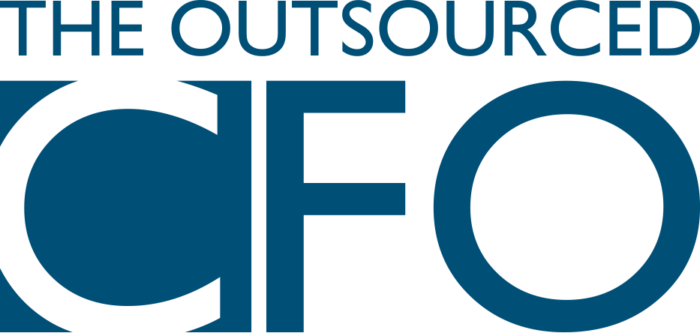
How to structure the numbers in your business to work for you
Getting the reporting fundamentals right so that you can monitor how your business is performing is absolutely essential and if often the point at which you might engage an outsourced CFO. Here are some of the key steps we would follow towards helping your business improve its profitability and sustainability.
1. Cash
Cashflow is the oxygen a business needs to run. Without positive cashflow it simply cant and then everything will fall over. There are many startups that have had excellent products or services that have fallen over simply because they ran out of cash. Here are two tools that very business should have in place to manage cash:
a. a 12 month Profit and Loss and Cash forecast. This will show you that the business is capable of generating sufficient cash to be viable. It will also show you the peaks and trough in cashflow which then allows you to plan for the toughs where there is a shortfall in advance. This maybe having in place a short term facility you can draw upon, negotiating terms with customers and suppliers, or bringing in other investors. Whatever the solution, the important thing is to recognise the cash gap in sufficient time to be able to do something about it.
b. a daily/weekly cash flash report. The long term forecast tells your cash requirements month to month, but it doesn’t tell you cash peaks and troughs within the month. You may have a cycle where customers pay you at the end of the month, but in the middle of the month you have a payroll. When the payroll happens, you have a big cash outlay which is made up when you customers pay at the end of the month. You need to make sure you have sufficient funds for that cash outlay
2. Gross Margin by Product/Service
There are many different types of businesses but these can essentially be split into 2 categories. Nearly all businesses provide either a product or a service. Irrespective of which, every business should have a business model which defines how the business will make money out of providing its product or service. If the business doesn’t know this then the business shouldn’t be in business !
The reporting system should align with this model so that the business can measure how it performs against its business model. For a product, sale price less cost of product will provide a Gross Margin – if the sale price achieved is less, or the product costs more to procure then the margin will be less. This information needs to loop back to the business model which might in turn allow you to revisit some of the assumptions in the model. The purpose of the reporting system is essentially to validate your pricing model and allow the business owner to make appropriate adjustments at the pricing stage so any issues are addressed.
3. Gross Margin by Customer
Strategic information about customers is very useful information. I have had many experiences where the insights gained from knowing customer profitability alter the way your business might think about its customers. For example, a noisy customer who is constantly in contact with your service team about issues can often be the one delivering the lowest margin. Similarly, the quiet customers who you never hear from have minimal impact on other parts of the business may well be your most profitable and ideal customer. Knowing which is which is important and can help the business focus and prioritise accordingly.
4. Monthly reporting process
This is an area where most small to medium sixed business are lacking when you compare them to what happens in a large business. A simple month end process will have a final date for completion of invoices, fulfilment of orders and then a final date usually a day or so later for journals. This gives you a really clear picture of where the month has landed. If there is something missing, it just become part of the next month and the business should focus on the break down in operational process so that it doesn’t happen again.
This simple discipline will provide a clear picture of the month within a 2-3 days of the month finishing. More importantly, you don’t have resources tied up for half the month finalising the previous month when they could be focused on more productive matters like reviewing financial performance, profitability and pricing models.
5. Don’t major in the minors
We have outlined key points which will help the business focus on profitability. Then there are overheads and other costs. While these need to be managed, once the overhead level or pattern has been established they don’t need much focus. Quite often I see cost reduction campaigns which focus on overheads. Usually there is not much to be gained here. Very few cost reduction campaigns focus on the hard issues – how to make the product or provide the service for less. This will often mean looking at labor hours and how they are spend and possibly time and motion. This could also mean looking how raw materials are acquired and consolidating suppliers. These are much more difficult questions to resolve than how much you are spending on printing.
6. Budgets
To this point budgets have not been mentioned. Having a budget of some sort is important as it provides a longer term view of the business goals. In order to forecast cash (point 1) there will need to be a budget or forecast to know what the cash requirements are. The level of detail that should be deployed in preparing a budget needs to be managed carefully. You need to remember that a budget can only be based on assumptions and when those assumptions change the budget can become out of date. How many businesses budgeted or forecast the impact of Covid 19 in February 2020? Those budgets are now sitting in a bottom drawer gathering dust. The key message here is that a business should have a budget, but the business should be careful before diverting resources into building extensive budget models which can only be based on assumptions which can become irrelevant in a short time.
As an outsourced CFO, we see many businesses who struggle with reporting which can be very tax and compliance focused. The fact of the matter is that if you make a lot of money you will pay a lot of tax, and that is a good problem to have. As a business owner your focus should be on making a lot of money because that’s what you can control and what will ultimately provide you with a valuable business asset. Hopefully you will find these tools and insights helpful in building a valuable business asset.
ABOUT BRIAN DOUGHTY
Brian Doughty is founder of the outsourced CFO which is a part time CFO service for small to medium sized businesses. Brian’s experience in large corporates and small business is unique and has enabled him to develop a simple to understand set of tools which will help business owners engage staff, monitor performance and achieve their goals.
